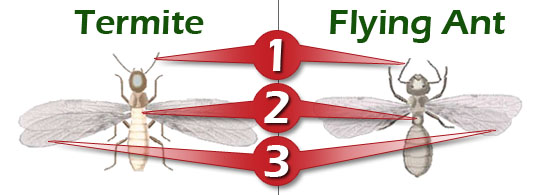Termite Control
We offer protection plans and certification to prevent termites from eating into your investment. Along with our prevention plans, we also offer services for removal of active termite infestation.
Termite 101
Want to learn more about termites? Well, you came to the right place. Use this page to learn about, identify and prevent termites.
The 2 most-common termite species
- Formosan Subterranean Termite
- Formosan subterranean termites are the most aggressive and destructive termite species in the United states. These termites can cause serious structural damage to your home within a 6 month timespan. Their colony size is commonly in the millions, and they can forage in a distance of over 100 meters.
- Drywood Termite
- Found coast to coast throughout the southern regions of the U.S., Drywood termites live inside dry wood. Unlike subterranean termites, this species does not require a connection to soil. Colonies usually consist of a few thousand termites. These termites like to split up and attack different parts of your home like your wooden frames, furniture, hardwood floors, or anything other wooden article.
How to tell if you have termites
Sometimes it is obvious if you have termites. However, sometimes it isn't always apparent that you have a termite problem until it is too late and you have suffered significant structural damage. While a termite inspection from one of our professionals is the only way to be sure, here are a few signs you can look for to see if you have a termite problem.
- You have wings scattered on the floor
- You have dark or blistered spots in your wood floors that can be scratched easily with a kitchen knife
- You have oval pellets on the ground near kick-out holes (termite excrement)
- You have mud-tubes (a tube of mud that comes up from the ground)
Any one of these symptoms might be termites. Termites shy away from heat, so you'll rarely see them in the heat of the day. Of course, if you do see a termite, then obviously you probably have an infestation. Use the pictures and guides below to determine if the insect you spotted is a termite.
Know the difference between a swarmer termite and a flying ant

Swarmer Termites have...
- Straight antennae
- Straight abdomen
- Equal-length wings
Flying ants have...
- Bent antennae
- Thin abdomen
- Unequal-length wings



